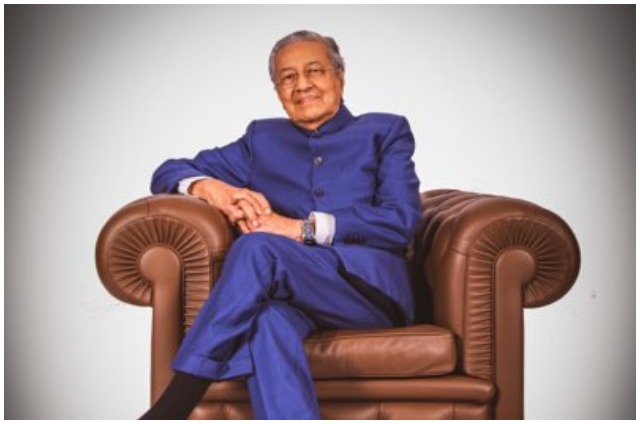

It’s only when you delve inside and let the Desire Eye do the talking that you realize it is on firm footing and eventually end up asking, “Why on earth would HTC market this as a Desire handset?”
The Desire Eye packs in what you call some real neat hardware you would normally find in top notch devices, making the HTC One (E8) all but redundant; at the same time giving big flagships some serious run for their money.
And did we mention — it’s got a 13MP front-snapper with dual-tone LED for the selfie-starved generation. With the kind of credentials it boasts of, the HTC Desire Eye could well be called the flagship Desire handset as of current stats, but there’s still a lot more than meets the eye. Let’s find out…
Design & build:
While the Desire Eye tries to preserve the sharp contours of HTC’s One range, it still maintains its distinct Desire identity. Just like all Desire devices it uses a plastic body and the all new Double Shot design.
But don’t let the plastic body fool you. The Desire Eye doesn’t appear cheap from any angle. The two colour design (in our case, red and white) makes the phone all the more funky and youthful.


At 151.7 x 73.8 x 8.5 mm and 154 g, the Desire Eye is certainly not a small device. It is considerably larger than the One (M8), the Samsung Galaxy S5, even the LG G3 and stands nearly as tall as the Samsung Galaxy Note 4.
To put things into perspective, HTC has still not managed to utilize the available real estate well enough and the device does come with chunky bezels. Of course, the two BoomSound speakers on the front and the massive 13MP front snapper deserve some blame for this.
The right edge houses the traditional volume rocker, the power and the dedicated camera buttons all of which are a little unnoticeable on first look (especially the camera button) since they have the same colour as the rest of the edge. Also, they are a little flimsy to use.
The left-edge has slots for a nano-SIM card and a microSD card. Both are covered by well-made protective seals. One major highlight of the Desire Eye is that it comes with IPX7 certification so that it can hold up to 1m of water for almost 30 minutes. What is remarkable is HTC has still managed to keep both the micro-USB and the 3.5mm jack flap-free.
Display & user interface:
With a 5.2-inchfull-HD IPS capacitive touchscreen display (1080x1920pixels resolution) and 424ppi pixel density, the Desire Eye has a sharp display. Of course, it’s no match for the LG G3; but the display is brighter and more vibrant than that in the One (M8) and is as comparable to the one in the iPhone 6.
The display is radiant and has a good contrast ratio, so overall it is quite pleasing and visually appealing to the eye. Colour reproduction is good, icons are punchy and it is virtually impossible to discern individual pixels.


Our birdies tell us an update to Android 5.0 is expected sometime in March, 2015 which gives you all the more reason to stay excited about the device. Also, it is possible that the Lollipop update will come with the Sense 7.
As part of the Sense UI, BlinkFeed news aggregator is on-board along with a slew of handy motion launch gestures (reminiscent to the ones in the One M8). The motion launch feature, which essentially involves double tapping the screen to wake the device as well as put it to sleep, among others, is quite useful as one-handed operability on the device could be challenging for some users.
Performance:
The Desire Eye is powered by a 2.3GHz quad-core Qualcomm Snapdragon 801 (MSM8974AB) processor with Adreno 330 GPU alongside 2GB RAM. These are the exact specs we find in the flagship One (M8), with the only difference being that the processor in the One (M8) is clocked at 2.5GHz.
The device gets AnTuTu Benchmark score of 28,719; 3DMark score of 10,308; PCMark score of 2979 and Geekbench 3 score of 599 (single-core) and 1727 (multi-core).
Numbers aside, the Desire Eye is what you call a haven for multi-tasking. Not that the One (M8) was bad, but the Desire Eye seems to be slightly better when it comes to lag-free experience, even when pushed to the extremes. We were able to open as many as 20 apps (including graphic games) simultaneously, and we witnessed no lag at all.
The device can run graphics intensive games (Asphalt 8: Airborne, Modern Combat 5) with ease, and at really good frame-rates. All throughout, we witnessed no lag even when running the games at maxed out settings. At one time, we played Asphalt 8 for nearly an hour and the device still showed no visible drop in frame rate.
To sum things up, while the Desire Eye is a powerhouse as far as multimedia experience is concerned (aided by the BoomSound speakers which we’ll discuss later), the device fares very well when it comes to usual tasks like browsing the internet, thanks to its bright and crisp display and largely no-lag experience.
The Desire Eye comes with 13MP front and rear cameras, coupled with dual-tone LED flash on both sides. Is this just another HTC gimmick (remember the company’s disappointing Ultrapixel tech?) or is it any good? Let’s find out…
Although, the two snappers on the Desire Eye may seem similar, they are entirely different and serve two different target areas. The 13MP BSI sensor on the rear comes with a 28mm lens with an F2.0 aperture.
The front sensor on the other hand comes with a 22mm lens and an F2.2 aperture. The shallower lens on the front means you can include more people in your selfies.
Let’s start with the rear camera. The primary camera on the Desire Eye clicks some really good photos in outdoor ambient lighting conditions, with ample detail and mostly accurate colours. That said we found some of our images ended up slightly darker than others.
Although images clicked in low light/indoor lighting are able to pack in detail on most occasions, there is evident noise. The primary snapper comes with autofocus, a very capable HDR mode and a slew of manual controls giving you ample control over how you wish to click your pictures. Optical image stabilization is sadly missing.
The front snapper is perhaps the more talked about feature of the Desire Eye, and quite rightfully so. Rest assured, selfies clicked with the device come out much detailed, correctly-exposed, and boast of mostly accurate colours.
Selfies clicked in low light do suffer from noise, but then you have the dual LED at your rescue. The LED doubles up as an exceptionally bright torch to aid in clicking way better selfies in darker conditions.
There’s a slight problem though: the dual-tone is somewhat on the whiter side, so the output images often turn out to be more washed out than expected. However, this is only a small compromise since the images clicked lack any noise.
HTC snappers have long been known to have exceptional shutter speed, and the trend continues with the Desire Eye. No, the final images are perhaps not as good as say those clicked by the iPhone 6 but the Desire Eye still is a very capable camera smartphone.
Although the front camera lacks autofocus, we found the selfie camera to have a slightly upper hand compared with the rear camera on the same device. It is also better than what you get on the plethora of selfie centric phones that have come into market lately.
To make things more interesting, the device also comes with various software features like Zoe, Split Capture, Pan 360, Photo Booth and a slew of filters, as well as face-beautification.
You can also click photos using voice commands, which actually work pretty well on the device. Both the cameras on the Desire Eye can shoot full-HD videos at 30fps.
The Desire Eye comes with 16GB of internal storage of which about 12.35GB is available for use. The device supports expandable storage of up to 128GB via micro-SD card, which is helpful since many users may end up clicking lots of larger-sized images with the 13MP snappers on-board.
Audio is one area where HTC is doing some real ground-breaking work thanks to its BoomSound technology. It’s hard to discern the dual speakers on the Desire Eye at first glance, since HTC has let go of its usual speaker grill model and instead brought in a pair of cleverly placed strips, above and below the main display. Sound output is top-notch; however peak loudness is a little lower when compared with the One (M8). Still, the Desire EYE is undoubtedly one of the better devices in the market when it comes to playing Bollywood songs.
Call quality:
Phone calls made with the Desire Eye are of acceptable quality and we did not see any call drops with our review device. Since the upper BoomSound speaker acts as your ear-piece, the sound output is louder and on most occasions we were forced to lower the volume while on call, but that’s not a bad thing.
Moreover, the Desire EYE is future proof since it supports 4G LTE.
Battery:
The Desire Eye uses a 2400mAh non-removable battery. When put to good use, the Desire Eye is able to deliver fairly well, however, benchmark scores stay below the likes of the One (M8) and the Galaxy S5.


The fact that we are putting the Desire Eye in the same league as some of the popular flagships is saying a lot about the device. However, we feel a 2800-3000mAh battery would have done better justice to the device, taking into account its bigger and more brighter display.
Still, moderate usage will see it sail through an entire day. Also, you have Sense 6’s proprietary normal and extreme power saving modes that work well to squeeze out some extra hours off the device.
Should you buy it?
The HTC Desire Eye is first and foremost a selfie-centric device and it doesn’t essentially disappoint at what it is intended to do. Although not a flagship device, the Desire EYE has enough juice to make it stand among the top-notch hardware devices, and that’s saying a lot about it.
If you’re in search of a selfie phone, the Desire Eye is as close as you get, as of now. Interestingly, that’s not the only thing it is good at. Even if we don’t put its selfie-centric credentials in equation, it is a powerful and well-made phone that can match, if not outrightly beat, any other smartphone in its segment.












